Related Research Articles
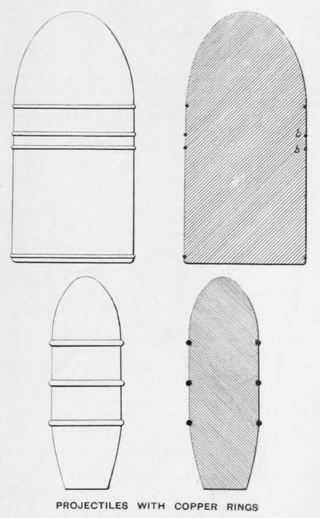
Rotation of ammunition is a term used with reference to guns. Projectiles intended for RML guns were at first fitted with a number of gun-metal studs arranged around them in a spiral manner corresponding to the twist of rifling. Invented in mid-1840s by Giovanni Cavalli, this method was defective, as it allowed, as in the old smooth-bore guns, the powder gas to escape by the clearance between the projectile and the bore, with a consequent loss of efficiency; it also quickly eroded the bore of the larger guns. Multiple solution to the problems were invented in two following decades, both for muzzle-loaders and breech-loaders.
Tubes and primers are used to ignite the propellant in projectile weapons.

A cartridge, also known as a round, is a type of pre-assembled firearm ammunition packaging a projectile, a propellant substance and an ignition device (primer) within a metallic, paper, or plastic case that is precisely made to fit within the barrel chamber of a breechloading gun, for convenient transportation and handling during shooting. Although in popular usage the term "bullet" is often used to refer to a complete cartridge, the correct usage only refers to the projectile.

Rifling is the term for helical grooves machined into the internal surface of a firearms's barrel for imparting a spin to a projectile to improve its aerodynamic stability and accuracy. It is also the term for creating such grooves.

In firearms terminology, an action is the functional mechanism of a breech-loading firearm that handles the ammunition cartridges, or the method by which that mechanism works. Actions are technically not present on muzzleloaders, as all those are single-shot firearms with a closed off breech with the powder and projectile manually loaded from the muzzle. Instead, the muzzleloader ignition mechanism is referred to as the lock.

A breechloader is a firearm in which the user loads the ammunition from the breech end of the barrel, as opposed to a muzzleloader, in which the user loads the ammunition from the (muzzle) end of the barrel.
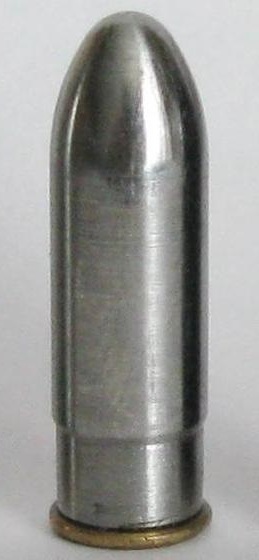
Caseless ammunition (CL), or caseless cartridge, is a configuration of weapon-cartridge that eliminates the cartridge case that typically holds the primer, propellant and projectile together as a unit. Instead, the propellant and primer are fitted to the projectile in another way so that a cartridge case is not needed, for example inside or outside the projectile depending on configuration.
A rifled breech loader (RBL) is an artillery piece which, unlike the smoothbore cannon and rifled muzzle loader which preceded it, has rifling in the barrel and is loaded from the breech at the rear of the gun.
Blowback is a system of operation for self-loading firearms that obtains energy from the motion of the cartridge case as it is pushed to the rear by expanding gas created by the ignition of the propellant charge.

A breechblock is the part of the firearm action that closes the breech of a breech loading weapon before or at the moment of firing. It seals the breech and contains the pressure generated by the ignited propellant. Retracting the breechblock allows the chamber to be loaded with a cartridge.
Obturation is the necessary barrel blockage or fit in a firearm or airgun created by a deformed soft projectile. A bullet or pellet made of soft material and often with a concave base will flare under the heat and pressure of firing, filling the bore and engaging the barrel's rifling. The mechanism by which an undersized soft-metal projectile enlarges to fill the barrel is, for hollow-base bullets, expansion from gas pressure within the base cavity and, for solid-base bullets, "upsetting"—the combined shortening and thickening that occurs when a malleable metal object is struck forcibly at one end.
This article explains terms used for the British Armed Forces' ordnance (weapons) and ammunition. The terms may have different meanings depending on its usage in another country's military.

A piston ring is a metallic split ring that is attached to the outer diameter of a piston in an internal combustion engine or steam engine.
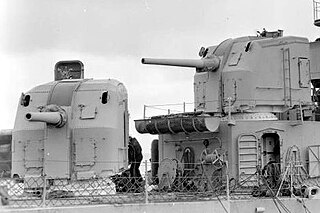
The Mark 12 5"/38 caliber gun was a United States dual-purpose naval gun, but also installed in single-purpose mounts on a handful of ships. The 38 caliber barrel was a mid-length compromise between the previous United States standard 5"/51 low-angle gun and 5"/25 anti-aircraft gun. United States naval gun terminology indicates the gun fired a projectile 5 inches (127 mm) in diameter, and the barrel was 38 calibers long. The increased barrel length provided greatly improved performance in both anti-aircraft and anti-surface roles compared to the 5"/25 gun. However, except for the barrel length and the use of semi-fixed ammunition, the 5"/38 gun was derived from the 5"/25 gun. Both weapons had power ramming, which enabled rapid fire at high angles against aircraft. The 5"/38 entered service on USS Farragut, commissioned in 1934, the first new destroyer design since the last Clemson was built in 1922. The base ring mount, which improved the effective rate of fire, entered service on USS Porter, commissioned in 1936.

An Armstrong gun was a uniquely designed type of rifled breech-loading field and heavy gun designed by Sir William Armstrong and manufactured in England beginning in 1855 by the Elswick Ordnance Company and the Royal Arsenal at Woolwich. Such guns involved a built-up gun construction system of a wrought-iron tube surrounded by a number of wrought-iron strengthening coils shrunk over the inner tube to keep it under compression.
An obturating ring is a ring of relatively soft material designed to obturate under pressure to form a seal. Obturating rings are often found in artillery and other ballistics applications, and similar devices are also used in other applications such as plumbing, like the olive in a compression fitting. The term "O-ring" is sometimes used to describe this kind of pressure seal.
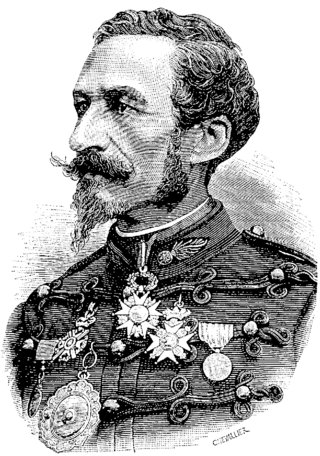
Charles Ragon de Bange was a French artillery officer and Polytechnician. He invented the first effective obturator system for breech-loading artillery, which remains in use. He also designed a system of field guns of various calibers which served the French Army well into World War I: the Système de Bange.
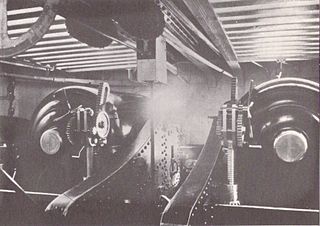
RML 12-inch 35-ton guns were large rifled muzzle-loading guns used as primary armament on British battleships of the 1870s. They were the longer and more powerful of the two 12-inch British RML guns, the other being the 25-ton gun.

The Afanasev Makarov AM-23 is a Soviet designed aircraft autocannon that has been used in a number of aircraft in the Soviet Air Force. Its GRAU index was 9-A-036. It was often used in place of the earlier and slower-firing Nudelman-Rikhter NR-23.

The Krupp gun is a family of artillery pieces that was used by several world armies from the nineteenth century onwards.
References
- ↑ "Reports on the Vienna Universal Exhibition of 1873: Presented to Both Houses of Parliament by Command of Her Majesty". 1874.
- ↑ "The Project Gutenberg EBook of Scientific American Supplement, No. 324". Archived from the original on 2006-09-11. Retrieved 2007-09-22.
- ↑ The Project Gutenberg eBook of Scientific American Supplement, March 18, 1882 Archived September 11, 2006, at the Wayback Machine
- ↑ s:Page:EB1911_-_Volume_20.djvu/233